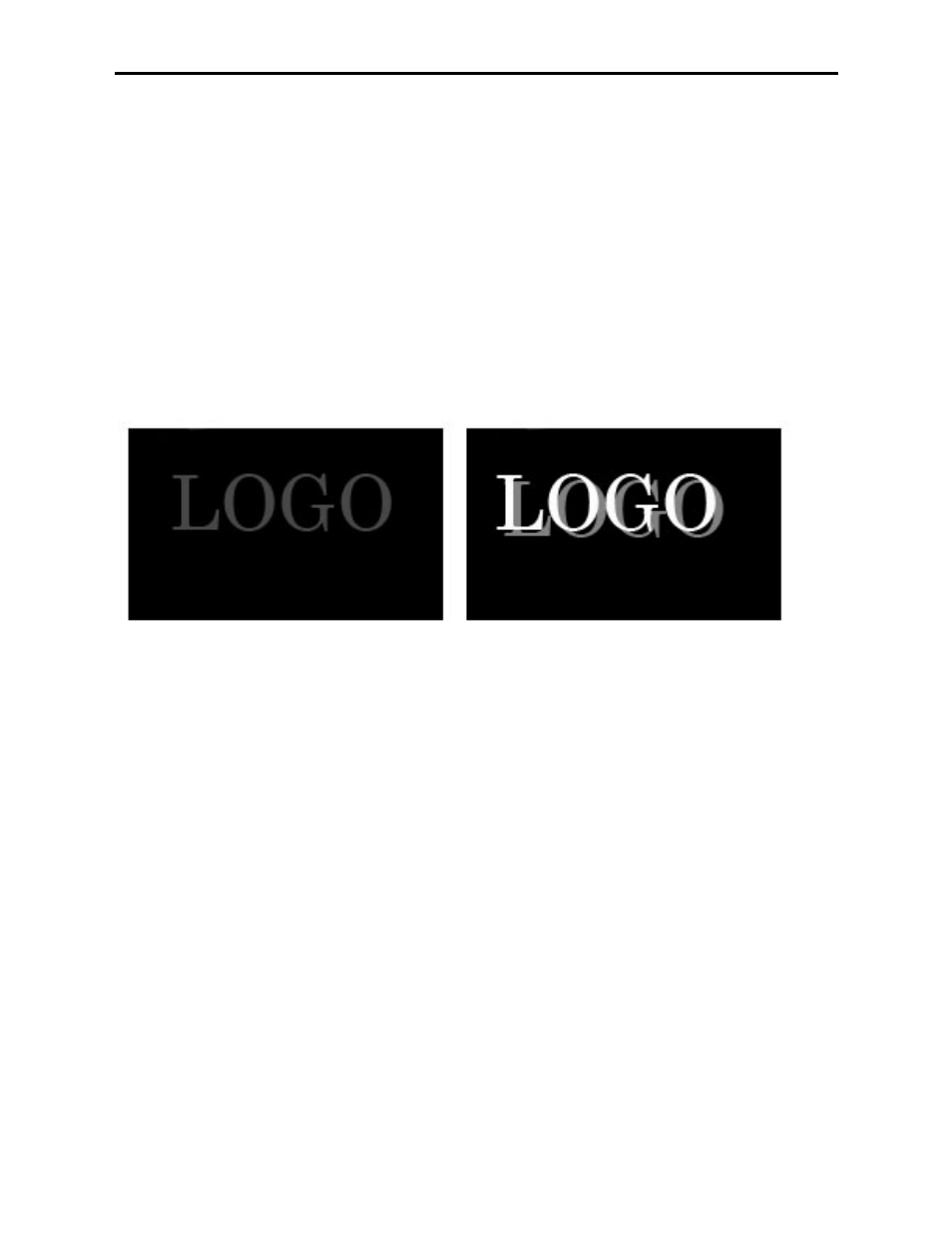Ensemble Designs 7420 HD/SD Logo Inserter User Manual
Page 34

KEYING WITH THE 7420 - A MINI TUTORIAL
It is called a “linear” system because it responds linearly to the alpha channel. This
means that the keyer will
a) suppress ALL of the background signal where the alpha channel is full white
b) Pass ALL of the background where the alpha channel is full black
c) Attenuate the background signal where the alpha is grey -- and do it in
proportion to the exact grayscale value of the alpha
One of the visual features that this technique provides is to have the alpha signal cause a
shadow to appear to be cast on the background signal by the foreground signal.
It is called an “additive” system because the foreground (key fill) is added to the
background signal in order to make the final image.
Here is a sample logo where the RGB portion and Alpha portion are shown separately.
On the left hand side, the RGB (color) portion of a logo that has been constructed over a
black background. The Alpha portion is on the right hand side. Note that the alpha has
two elements, a white section which matches to the text in the RGB fill, and a gray
section which has no corresponding element in the RGB.
When the 7420 keys this graphic over a background, it does it in two steps. The first step
is to cut a hole in the background using the linear characteristics of the alpha. The
portions of the alpha that are gray will attenuate (or darken) the background video. But it
will still be possible to see details of the background.
Numerically this is done by multiplying the alpha against the background. We can think
of a full white alpha being equal to 1.0; a black alpha being equal to 0.0; and intermediate
gray values being a fraction -- such as 0.45. If we multiply the background with the alpha
signal like this:
new Background = Background x (1 - Alpha)
7420-34
Model 7420 HD/SD Logo Inserter
